When a user interacts with a virtual agent, their message should be simple, clear and provide enough information to reach a desirable outcome.
This is, of course, hardly ever the case. Typical chat messages can often contain everything from typos and spelling mistakes to multiple different questions within the same sentence, proving impossible for ordinary chatbots to parse.
In such cases, the onus sits squarely on the technology to arrive at an outcome that doesn’t frustrate the customer with incorrect information or, worse yet, throws up a dreaded “I’m sorry, I don’t understand” response. Conversational AI is designed with the express purpose of avoiding these pitfalls. By being able to understand a sentence in its entirety, even if it contains multiple customer intents, conversational AI can generate intelligent responses that are better at meeting the end user's needs.
In this article, we will look at how conversational AI is able to provide accurate responses based on a greater overall understanding of a customer’s query.
Driving the purpose of a conversation
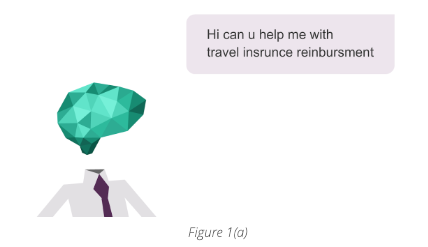
As already mentioned, customers don’t always communicate clearly when chatting with a digital agent. A good example of this is the sentence presented in Figure 1(a).
Leaving aside the obvious grammatical and spelling errors (which are easy enough for a conversational AI-powered chatbot to process), this is a deceptively tricky sentence because it contains not one, but two possible user intents - ‘travel insurance’ and ‘reimbursement’. Lesser chatbot solutions on the market have a higher likelihood of tripping themselves up on this example - offering an incorrect response along the lines of “Yes, I can tell you about travel insurance” while entirely ignoring that the customer is actually interested in filing a claim.
Conversational AI, on the other hand, is able to analyze the complete sentence and extract the relevant information - even if it determines that there are multiple possible intents - and produce a response that is far more helpful to the customer.
But first, the basics
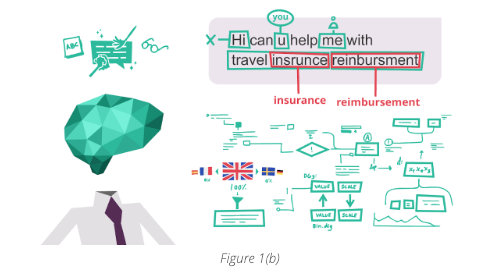
Conversational AI uses a combination of deep learning and natural language understanding to arrive at a response. It starts by performing comprehensive text processing on the sentence; deciphering slang and dialect, correcting spelling and preparing it for interpretation.
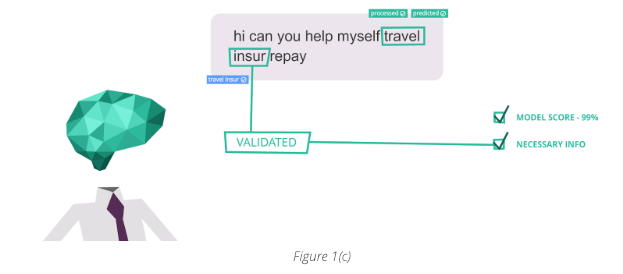
It then breaks down the sentence to its ‘stemmed’ form, as illustrated in Figure 1(c), where it can begin calculating the customer’s intent looking at the sentence as a whole. To achieve this, conversational AI uses our unique multi-level intent hierarchy, which has been developed to enhance both scalability and accuracy.
The intent in the sentence is given a score against the prediction model. In this example, the score is high because of the accuracy of the travel insurance intent. It is then validated, confirming that the necessary info has been identified.
The conversational AI advantage
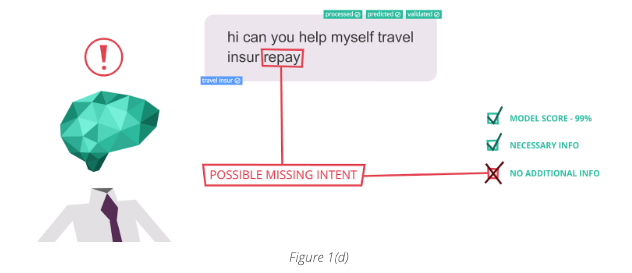
This is where a less robust solution would normally stop processing, generate an incorrect response based on (only) the travel insurance intent and call it a day.
But conversational AI has no room for mediocre responses. Instead, it goes a step further by acknowledging that there is additional information to be parsed in the sentence and identifies the possibility of a missing intent, shown in Figure 1(d).
This sentence, in particular, is an excellent example of why conversational AI is superior to other chatbot solutions. It shows that by adding the word “reimbursement”, it completely changes the meaning of the sentence, illustrating the importance of being able to interpret a customer’s request in its entirety.
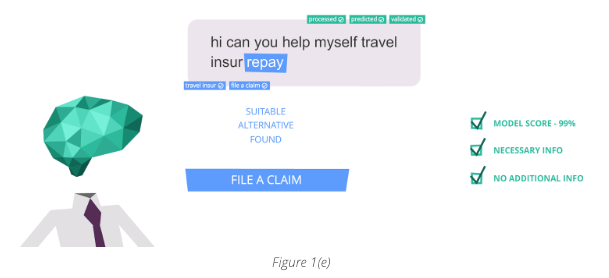
As shown in Figure 1(e), conversational AI is able to recognize the additional intent and find a suitable alternative to add to a list of possible responses. The cycle is repeated until there is no further information to be processed and a response can be generated.
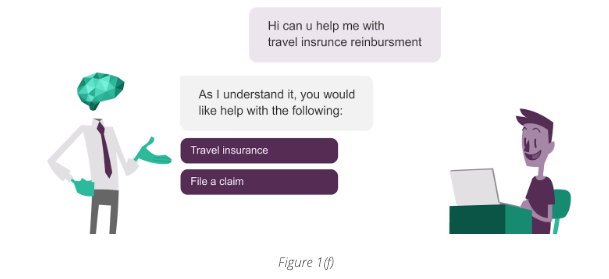
The kinds of responses that conversational AI is able to provide illustrate a fuller understanding of the end user’s query, have a greater probability of being correct and are just more helpful overall.
Ultimately, customers are less likely to pick up the phone to customer service in frustration if they can resolve their issues from within the chat window. This bolsters brand loyalty and helps reduce the volume of traffic to a company’s call center - a win-win on all fronts.
